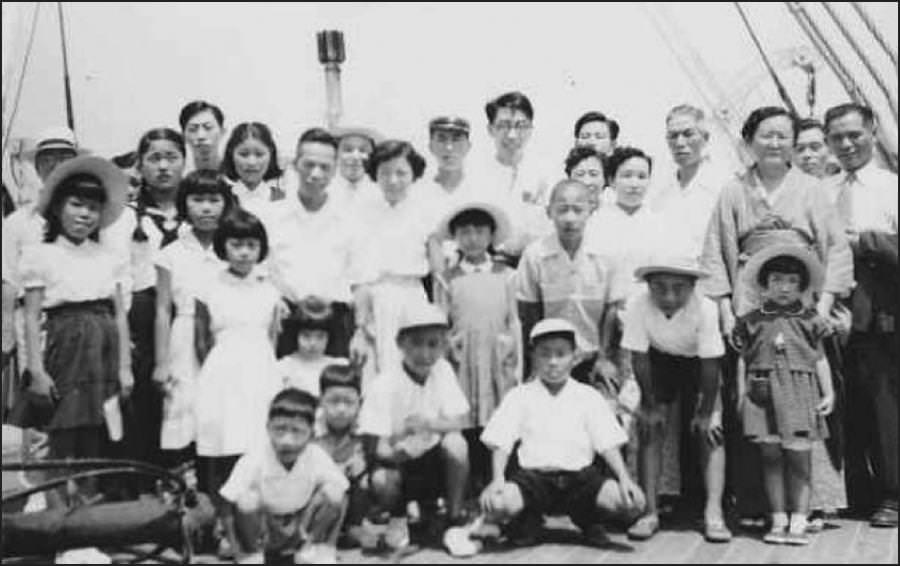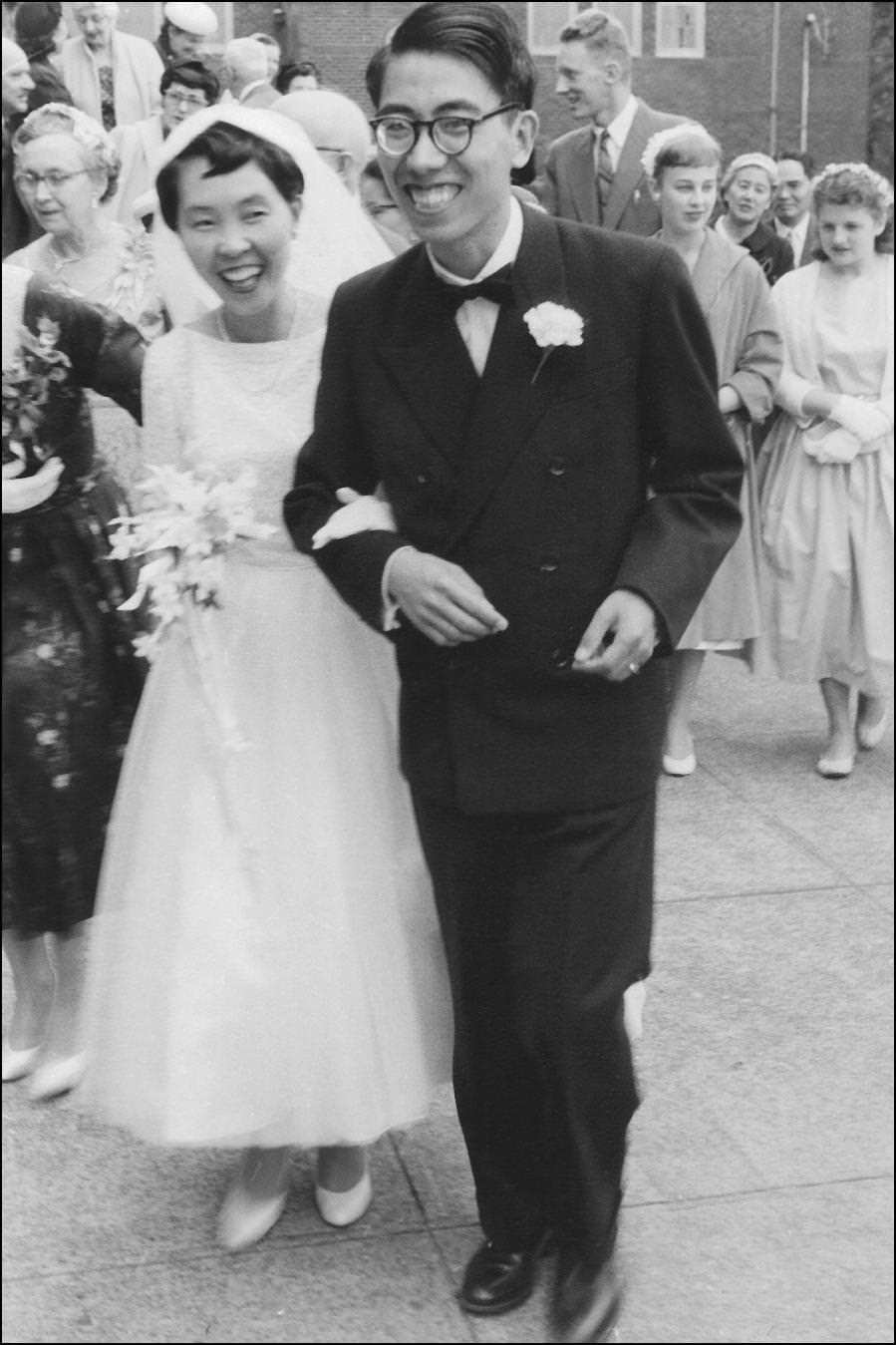by Mei and Yukiko Kobayashi
Shoshichi Kobayashi was born January 4, 1932, during the Japanese New Year’s holiday celebrations in the seventh year of the reign of the Emperor Showa.1 Shoshichi was the eldest of five sons born to his parents, Yoshie and Kyuzo.
Several months after the arrival of Shoshichi, the family moved to Tokyo, where business opportunities were more promising. Within a few years, Kyuzo had saved enough to open his own futon store.
When the war ended, Shoshichi’s math teacher, Mr. Muneo Hayashi, advised his parents to allow their son to apply for Ichiko (number one high school) in Tokyo. Shoshichi passed the entrance exam in his fourth year at middle school.
At the end of his first year in Ichiko, Shoshichi took the entrance exam for admission to the University of Tokyo. He passed it on his first try and entered the university after only one year at Ichiko.
At the University of Tokyo (Tokyo-daigaku or Todai) Shoshichi found that he was among the top students in mathematics. At the end of his sophomore year he declared his major to be mathematics and registered for a program to receive high school teaching certification. At this time he was unaware that people could make a living “just doing mathematics.” The situation soon changed.
When Shoshichi started looking for a major advisor, his assigned undergraduate advisor told him about a charismatic young professor named Kentaro Yano, who would be returning from the Institute for Advanced Study at Princeton the following academic year. Just hearing about someone returning from Princeton seemed exotic and exciting to Shoshichi. Sure enough, Professor Yano lived up to and exceeded all expectations. Advisor and advisee made quite an odd but inseparable pair. Yano was a vivacious chain smoker who enjoyed drinking and clubbing, while Shoshichi was a quiet bookish type, a nonsmoker who drank modestly and only during social occasions. Words cannot express the admiration, love, and respect that Shoshichi had for his thesis advisor. Their kinship lasted until Yano’s death during the year-end holiday season in 1993. Under Yano’s guidance Shoshichi was bitten by the research bug.
Soon it became clear that postgraduation studies in France would be better than remaining in Tokyo. Shoshichi enrolled in night classes at Athénée Français to learn French to prepare for the exam for a fellowship to study abroad. The effort paid off handsomely. Shoshichi won a fully funded fellowship to study at the Universities of Strasbourg and Paris for one year (1953–54). He was elated by the news.
The fellowship required recipients to pay for their boat fare and transportation to Paris. This cost Shoshichi’s parents nearly a fifth of what they had paid for a house three years before. Costs for room, board, and tuition in France plus a small stipend would be covered by the French government. The fare for the return trip at the conclusion of the year was also included in the package.

On what was the hottest summer day in Tokyo recorded at that time, Shoshichi boarded a French passenger ship with other fellowship recipients and waved to his relatives who had travelled to the port of Yokohama to wish him well during his year abroad. No one imagined that Shoshichi’s departure would be permanent. He would return for his first brief visit to Japan in 1965 as a husband, father, and visiting professor from the University of California at Berkeley, courtesy of a Sloan Fellowship.
The journey to France was quite an adventure. Shortly after the ship passed through the Suez Canal, Shoshichi began running a dangerously high fever and was admitted to the hospital quarters onboard. He was only semiconscious when the ship arrived in France. The first months of his postgraduate experience were spent in a French hospital recovering from typhoid.2 The French mathematical community was very friendly. Shoshichi attended seminars organized by famous professors.3 He discovered that he might be able to make a living “just doing mathematics.” One day in Paris he met Katsumi Nomizu, a young Japanese mathematician who had just finished his Ph.D. under Chern at the University of Chicago. Nomizu suggested that Shoshichi return to Japan via the United States. He mentioned two great mathematicians from whom Shoshichi could learn the art of mathematics: Chern at Chicago and Allendoerfer at the University of Washington. Shoshichi sent a personal statement together with reprints of his recent publications to these two universities. A few weeks later he received an acceptance letter from the University of Washington stating that all expenses would be covered upon arrival. From Chicago he received a thick envelope of application forms. His decision was not difficult. The French authorities agreed to cover his boat fare to the United States in lieu of travel costs back to his parents’ home in Japan.
Shoshichi was overwhelmed by the generosity and kindness of the members of the university community in Seattle. On his first day at the university, the department chair, Professor Carl Barnett Allendoerfer, made time to greet Shoshichi and inform him of special arrangements to have his stipend paid in advance at the beginning of each month for just the first year. The administration had heard from more senior foreign students of the difficulties in securing a loan after arriving with little money. Shoshichi took an immediate liking to the professor. Over the course of a few months he found Allendoerfer to be a great statesman and scholar and was very happy when Allendoerfer agreed to be his doctoral thesis advisor.

Later that year Shoshichi was best man at the wedding of his friend Akira Ishimaru. The bride’s maid of honor was Yukiko Ashizawa, who was also from Tokyo but from a different section of the city. She was on leave from her duties as a teacher at Rikkyo Elementary School in Tokyo. Had it not been for the war, it is doubtful that Shoshichi and Yukiko’s paths would have crossed in Tokyo. They were formally engaged before he left for the Institute for Advanced Study in Princeton for his first postdoc in 1956, one year after his arrival in the United States. Shoshichi returned to Seattle the following spring for Yukiko’s graduation and for their wedding on May 11, 1957.
After the wedding the couple drove to the University of Chicago, which had indisputably become a leading international center of geometric research under the leadership of Shiing-Shen Chern. Shoshichi was excited over the prospect of meeting Chern in person. Although Shoshichi had heard many stories of the great mathematician while in Paris, he was even more impressed by Chern’s kindness. Shoshichi enjoyed the open and productive collaborative atmosphere as a summer research associate sponsored by Chern.
In the fall the Kobayashis returned to Princeton to complete his second and final year at the Institute. Eleven months following their marriage, the couple welcomed their first child, Sumire. In the fall of 1958 Shoshichi and Yukiko packed up for another move, this time to MIT, where Shoshichi would be a postdoctoral research associate. Just as they settled in and learned that they would soon be parents to a second child, Shoshichi received a tenure-track offer from the University of California at Berkeley. Chern would be moving to Berkeley, and he was working to establish a world-class center for mathematical research. He asked whether Shoshichi would be interested in joining the faculty. There could be no greater privilege.
Since United States visa regulations at the time required applicants to leave the country during administrative processing for a green card, Shoshichi accepted a very generous offer from the University of British Columbia in Vancouver, Canada. In 1962 Shoshichi and his family received visa clearance, and he joined the faculty at Berkeley. A year later Volume I of The Foundations of Differential Geometry was completed and published. In 1966 Shoshichi became a full professor at Berkeley. He remained on the faculty at Berkeley after his retirement, first as professor in graduate studies and then as professor emeritus.